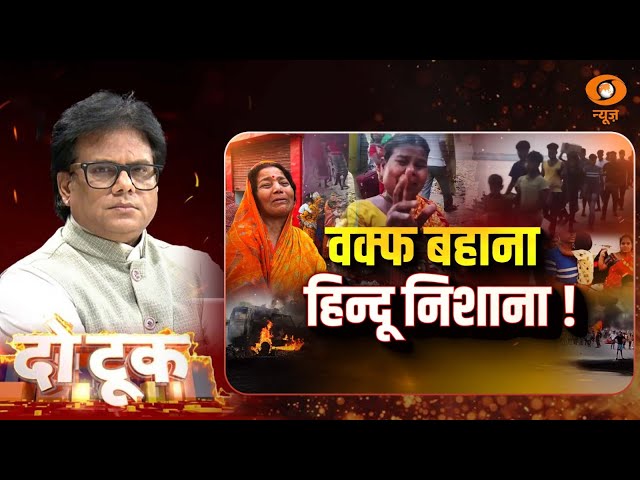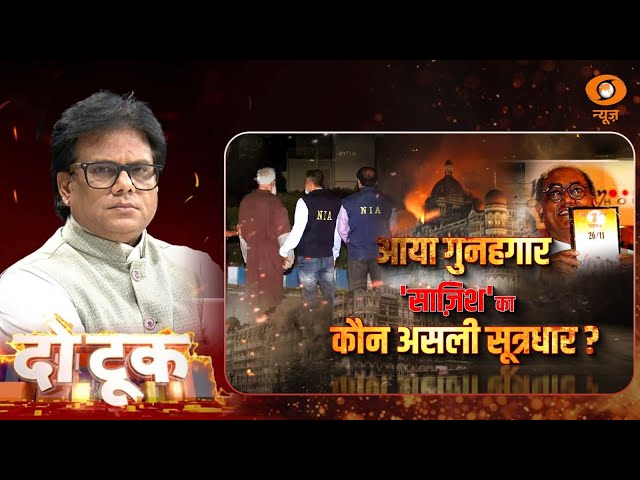In a world racing toward the future, where screens flicker faster than turning pages, storytelling remains a powerful tool for shaping young minds. Even in today’s fast-paced world of instant visuals and fleeting attention, where things are often taken for granted, the timeless power of stories continues to leave a lasting impact on the minds of the readers. Stories are not for entertainment only; they create empathy, fantasize, and develop values that will guide children through a lifetime. Loss due to the preference the publishing trade has placed on marketability over meaning has deprived the audience of the soul of storytelling — that soul which is deeply rooted in cultural heritage and moral lessons. For stories, which carry tales of gods, kings, and other common folks, are like bridges that link the past with the present. This piece highlights the urgent need to revive meaningful, value-rich stories in children’s literature in a big way to shape character, culture, and deeper connections.
Brain and Beyond
According to neuroscientists, stories wire the brain. Research says that stories engage different sections of the brain simultaneously, therefore enhancing memory, emotional intelligence, and cognitive development. Reading about characters who experience difficulties causes emotional reflections to flow through the brain in a similar way, which may stimulate empathy and resilience. A lasting impact throughout someone’s life can be created with a well-told story whose imprint shapes the moral compass for a child.
More Than Just Fiction
In the Bharatiya tradition, stories are not entertainment alone: they are wisdom. Children learn by observation, but what if they could also learn by visualization? Stories brimmed with moral lessons do more than tell: they inspire. A story about a courageous girl conquering injustice might propel a child farther than a hundred lectures. They are part of life; a guiding light for all of us. Stories have a cultural pulse in India. From Ramayana to folk tales echoing in the villages, stories set children in deep heritage and give wings to their spirit, enabling them to soar high only to return home with new experiences.
The Root of Identity
Heritage is the pillar holding up an identity of any society. Stories that portray culture and tradition nourish the very being of the child. These stories speak to a child about his/her culture and traditions, he/she gets to know who he/she is. In India, stories serve more in the sense of narrating history; they become value-impregnated tools for imparting respect, duty, and resilience through the timeless tales of Rama, Krishna, local folklore and the like.
The Global View
Stories do not isolate cultures; they celebrate them. Most of the cultures of the world use stories to preserve their identity. A child in Japan may grow up knowing Manga while a child in Germany may be familiar with Fix and Foxy. Courage and loyalty are tied to Momotaro in Japan, while the Native French (and UK) speak of harmony through stories of Astrix. It is all about cultural diversity within children’s literature that underpins and grounds them in roots yet opens the door to inclusivity.
Globalization has opened the doors of the world to the stories but largely at the expense of local stories. It is very good for the child to read about Harry Potter, but equally, they should hear the simple yet beautiful stories of Sudha Murthy that are rooted in kindness and in reality. Maintaining a balance between global and local literature allows the child to embrace different environments without forgetting their culture.
The Moral Compass
Moral development in childhood lays the foundation for a child’s sense of right and wrong, guiding his or her behaviour and decisions. The development of key virtues such as empathy, responsibility, and integrity, which are the bedrock of social relationships and personal development, comes later. Strong moral development influences children at an early stage in building their resilience, making right choices, and contributing positively to society. Stories are an easy way to talk about such thoughts. For instance, the stories from the Mahabharata, the epic combat between the Pandavas and the Kauravas, teach us about the consequences of greed and standing up for what is right.
Moral lessons, or morality upon which stories are written, can be explored in very subtle realms. Modern literature has forayed into more complicated moral landscapes where characters face life-like dilemmas. The authors of today often weave in characters that can be identified with, faced with moral choices that are part of their very existence, thus making lessons much more powerful.
Blending Culture and Morality in Modern Contexts
Tradition itself doesn’t become stagnant, but it can risk being perceived as outdated if not adapted or reinterpreted for modern times. Newer stories should be created to address contemporary challenges—tales of Lord Shiva’s meditative power can inspire mindfulness, while the resilience of Draupadi can empower young girls. Teenagers can learn the importance of making the right kind of friendships from the stories of Duryodhana and Karna, and Krishna and Sudhama. Stories of Hanuman’s unwavering devotion can teach perseverance, while Yudhishthira’s commitment to truth can instil integrity. Similarly, the resourcefulness of Tenali Rama can inspire creativity in young minds.
Examples of cultural evolution in stories are plenty. Amar Chitra Katha has adapted the mythological stories to appeal to the present-day reader with bold and colourful illustrations along with a simple, accessible style of writing. Tinkle, with plotlines featuring everyday moral lessons told with humour, encourages children to read. Across the globe, The Little Prince brings insights on life, all wrapped in simple storytelling. Anansi the Spider, A Tale from the Ashanti (Gerald McDermott, USA) is a vibrant retelling of an African folklore about Anansi, the trickster spider, teaching problem-solving and wisdom to young readers.
The State of Today’s Childhood
Digital distractions and short attention spans are a common complaint often heard from parents and teachers regarding the condition of children today. It is hard to hold a child’s attention in this TikTok world—with all the distractions from video games in their lives. Storytelling must update itself and find new ways of expression that do not compromise on the depth. Interactive storytelling sessions, audiobooks, and graphic novels present novel ways to keep children engaged.
Battling the Myths About Moral Storytelling
Myth 1: Moral Stories Are Boring
The assumption that moral tales preach rather than entertain is an outdated one. The tales of the Panchatantra demonstrate in plenty that moral lessons can be packed full of wit, humour, and clever twists.
Myth 2: Cultural Stories Are Irrelevant
Cultural stories are the reflections of ever-changing human emotions. With the stories of the Ramayana or the Mahabharata on righteousness, duty, loyalty and sacrifice being equally applicable today as they were centuries ago, these narratives can be given modern settings in order to make them more relatable without losing any of their substance.
Myth 3: Fun and Values Can’t Go Hand in Hand
Fun and values do not have to be in opposition to one another when telling a story well. Chhota Bheem is an excellent example of a series with entertaining adventures interwoven with values of friendship and courage.
Role of Educators, Parents, and Publishers
Teachers play a vital part in introducing children to good stories. Storytelling sessions that prompt discussions allow children to imbibe values much better than when they are just reading. In fact, educators act as the gatekeepers.
Probably, a parent is usually the first storyteller for any child. Bedtime stories are great opportunities to impart values in a subtle manner. Grandparents’ stories bring in layers of bonding and cultural transmission.
If viewed critically, the publishers have the power to decide what children get to read. When publishers support authors writing stories with cultural richness and value-oriented message structures, good literature can reach the young audience. This is also the need of the day.
Real-Life Effects
In all these years, The Panchatantra has given age-old lessons of solving problems and wisdom, inspiring many modern adaptations across the world. Wings of Fire has fuelled the dreams of millions, instilling in children willpower and ambition to persevere. Its root lies in the everyday India speaking profound things with simplicity and compassion. Meanwhile, Coelho’s The Alchemist has been inspiring countless readers around the globe to dare to dream and follow their destinies. These stories, from different cultures and ages, have ensured that the key messages of resilience, wisdom, and hope were imparted, shaping minds and changing lives.
What is Ahead: The Future of Storytelling
The future of storytelling lies at the junction of tradition and technology; classic tales are being revived through modern means such as audiobooks, storytelling apps, and virtual reality. While the format may change, the spirit of these stories remains the same. It must also create a children’s literature world in which every child feels seen, heard, and valued. Stories ought to reflect diverse experiences so that young readers can identify with characters who share their struggles, aspirations, and cultural perspectives. Genuine inclusivity in literature inspires empathy and widens outlook, thereby making storytelling an essential instrument for social connectedness.
Stories have thus become vessels of culture. The moral fabric of a society is woven by such threads of bravery, compassion, and resilience and is as valid today as it was yesterday. Each one has a collective responsibility to pass these timeless narratives, so that they may continue to inspire and guide the future generations. By preserving and adapting these stories, we enrich both our heritage and our future, keeping the wisdom of the past alive in meaningful ways.
Conclusion
Stories are more than just words on paper, they are architects of children’s vision. Such an environment becomes so rapidly changing, it more than ever necessitates the story in cultural heritage and moral wisdom. Bharatiya literature, with its multi-textured ranges of epics, folklore, and ordinary tales, is a rich treasure store of timeless lessons. Balancing these with global narratives ensures that children grow up with both roots and wings. As we write the next chapter of children’s literature, let it be one that tells not just of heroes and adventures but of values that last a lifetime.




















